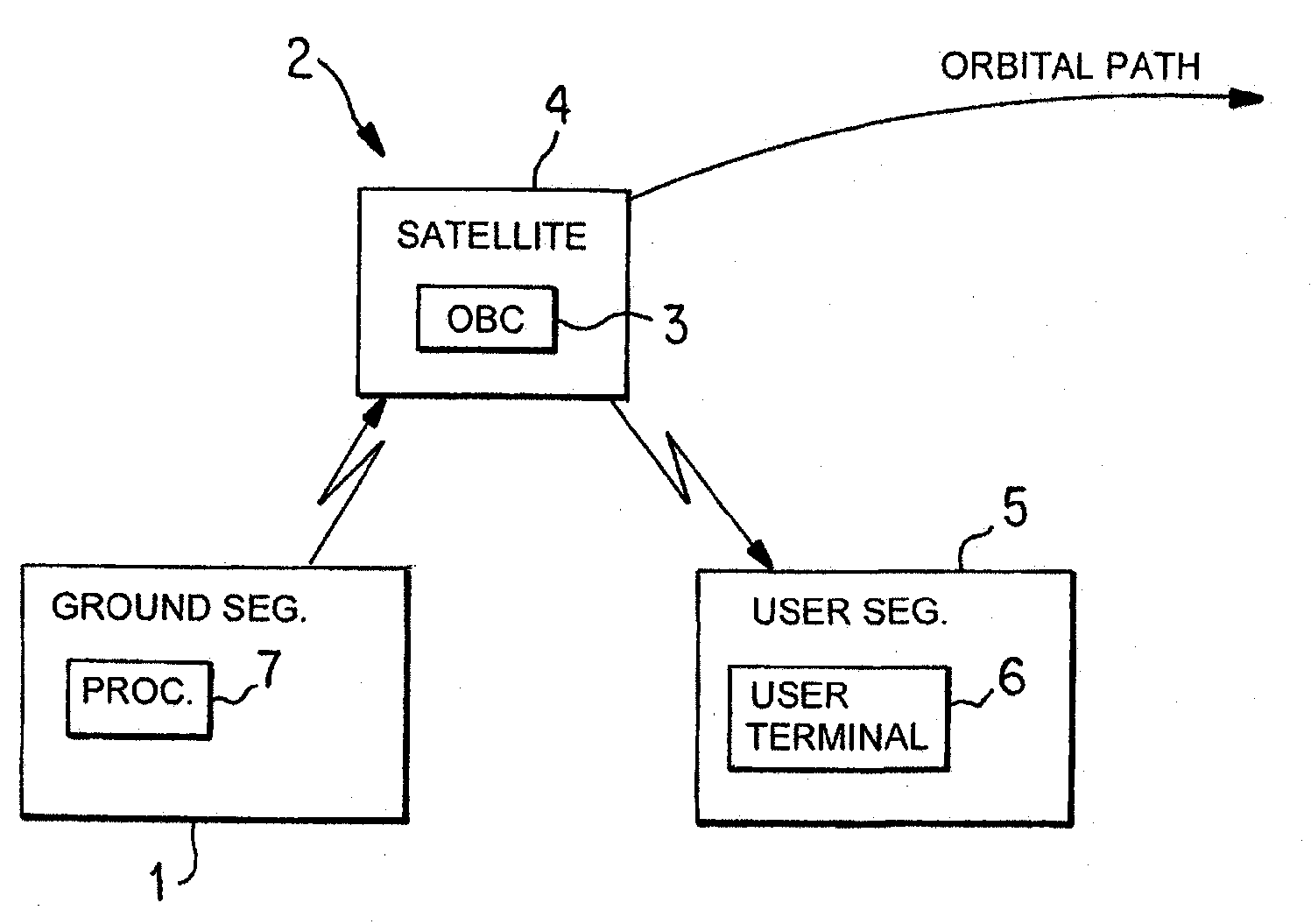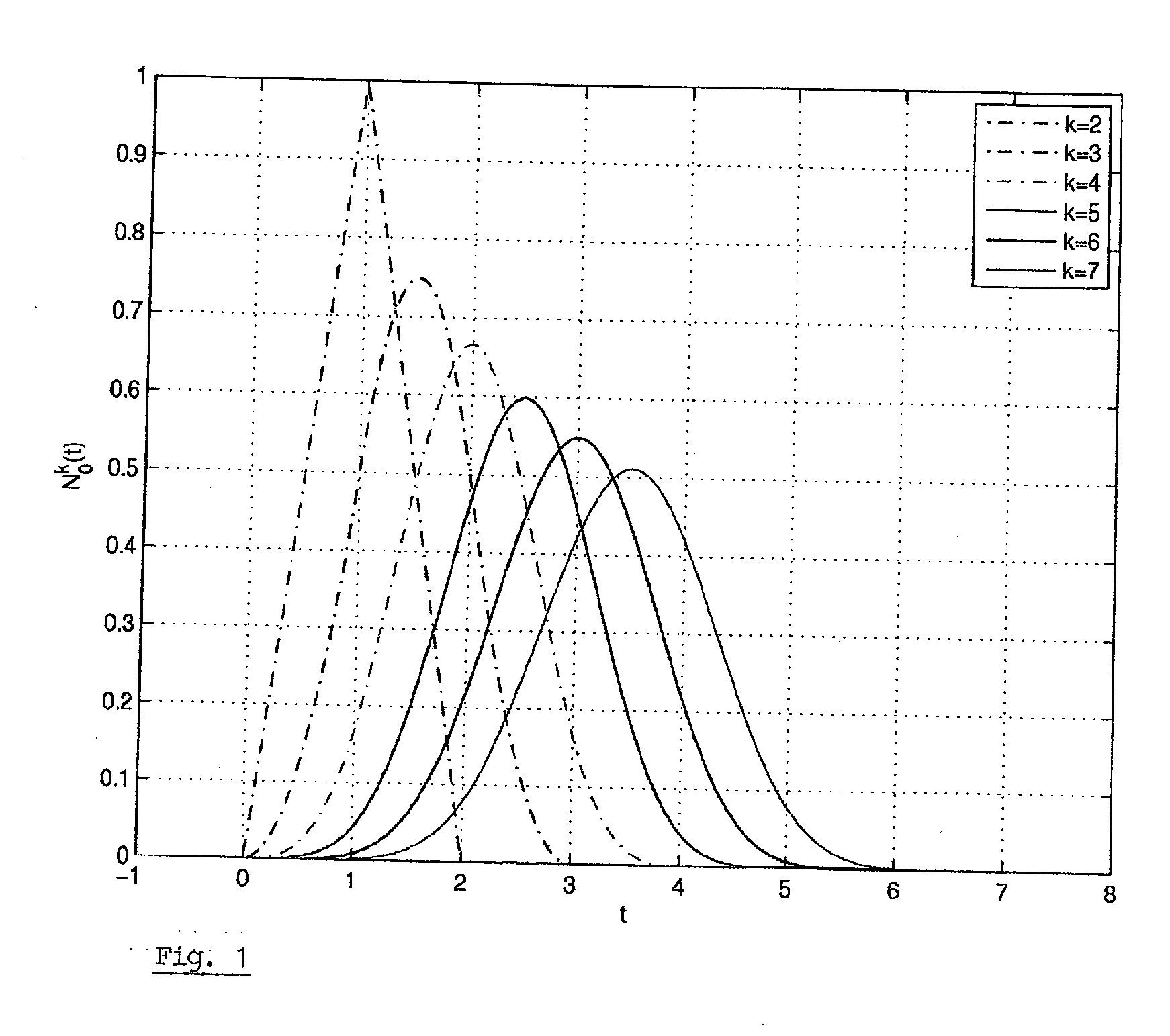Method and Apparatus for Operating a Navigation Satellite System
- Summary
- Abstract
- Description
- Claims
- Application Information
AI Technical Summary
Benefits of technology
Problems solved by technology
Method used
Image
Examples
case 1
[0084]The following applies: mmn=0. The flag is placed such that it shows usability. The km−m+2 nodes
(tj0+j)j=-km+m1
are all contained in the interval
(τi0,τi0+1).
Because of the demanded interpolation property and the 4th property of Definition 2, the precise values of the first function systems at these nodes are known. At the previous m−1 nodes
(tj0+j)j=-km+1-km+m-1,
this information is not known. For this reason, the interpolation of the km−m+2 precise values in the pertaining nodes can be carried out by the function system
(Ni0+ikm-m+2(·;(τl)l∈N))i=-km+m-10
and results in coefficients
(b~i0+ikm-m+2)i=-km+m-10.
These represent a polynomial of the degree km−m+1 over the interval
[τi0,τi0+1].
Because of the unambiguousness of the B-spline representation in the case of the same node sequences, the coefficients
(b~i0+in)i=-n+10
are identical with
(bi0+in)i=-n+10.
This means that, as soon as km=n+m−2 coefficients of the second function system are available, the required coefficie...
case 2
[0085]The following applies: mmn>0. This means that at least one coefficient bin is available. The flag is placed such that it shows this usability. Two possibilities exist for handling this second case.
[0086]Strategy A: As soon as the first coefficient of the first function system is available, but simultaneously fewer than km=n+m−2 coefficients of the second function system are available, all coefficients which had already been received are rejected, and it is necessary to start from the beginning. This approach could have the result that the time to the first fix is doubled.
[0087]Strategy B: In this strategy, the interval
(τi0-1,τi0+1),
which certainly comprises all already received nodes, is considered. The n+1 coefficients
(b~i0+in)i=-n0
of all B-spline functions Npn(·;(τl)l∈ N) which contribute to this interval, can be determined by the solution of the following linear equation system:
{tilde over (b)}i0n!=bi0n and the following applies to all p=j0−km+m, . . . , ...
PUM
 Login to View More
Login to View More Abstract
Description
Claims
Application Information
 Login to View More
Login to View More - R&D
- Intellectual Property
- Life Sciences
- Materials
- Tech Scout
- Unparalleled Data Quality
- Higher Quality Content
- 60% Fewer Hallucinations
Browse by: Latest US Patents, China's latest patents, Technical Efficacy Thesaurus, Application Domain, Technology Topic, Popular Technical Reports.
© 2025 PatSnap. All rights reserved.Legal|Privacy policy|Modern Slavery Act Transparency Statement|Sitemap|About US| Contact US: help@patsnap.com



